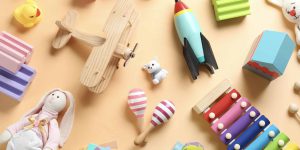How Are Kids Toys Produced
Toys are an integral part of childhood, fostering imagination, creativity, and playfulness. Have you ever wondered about the journey behind the creation of these cherished items? Let’s delve into the fascinating process of how kids’ toys are produced, from conception to the toy store shelves.
Understanding Toy Creation
From initial concepts to the final product, the journey of toy production involves a meticulous process. Designers brainstorm ideas, considering safety, age-appropriateness, and educational value. This phase marks the inception of a toy’s journey.
Design and Development
Once a concept is approved, designers create detailed sketches and 3D models using computer-aided design (CAD) software. This step allows for adjustments and improvements before moving to the prototype phase.
Prototyping
Prototyping brings the toy to life in a tangible form. Using various materials, such as plastics, wood, or fabric, prototypes are crafted to test functionality, durability, and safety. Multiple iterations refine the design before finalization.

Materials and Manufacturing
The selection of materials is crucial for toy safety and durability. Manufacturers source materials that meet safety standards and environmental regulations. Injection molding, 3D printing, or assembly lines bring the design to reality.
Quality Control Measures
Stringent quality checks are integral at every stage. Toys undergo rigorous testing for safety, durability, and adherence to regulatory standards. This step ensures that the final product meets strict guidelines.
Packaging and Branding
Packaging plays a vital role in attracting consumers. Eye-catching designs and informative packaging communicate a toy’s features and benefits. Branding elements help in creating recognition and trust among consumers.
Distribution and Marketing
Once packaged, toys are ready for distribution. Marketing strategies, including advertisements, social media campaigns, and collaborations with influencers, create buzz and drive sales.
Environmental Considerations
Toy production also brings environmental responsibilities. Many manufacturers strive to use eco-friendly materials and sustainable practices, aiming to reduce their carbon footprint and impact on the planet.
The journey of creating kids’ toys involves a harmonious blend of creativity, technology, safety measures, and market understanding. Understanding the intricate process behind toy production enhances appreciation for these playful companions that brighten the world of childhood.










